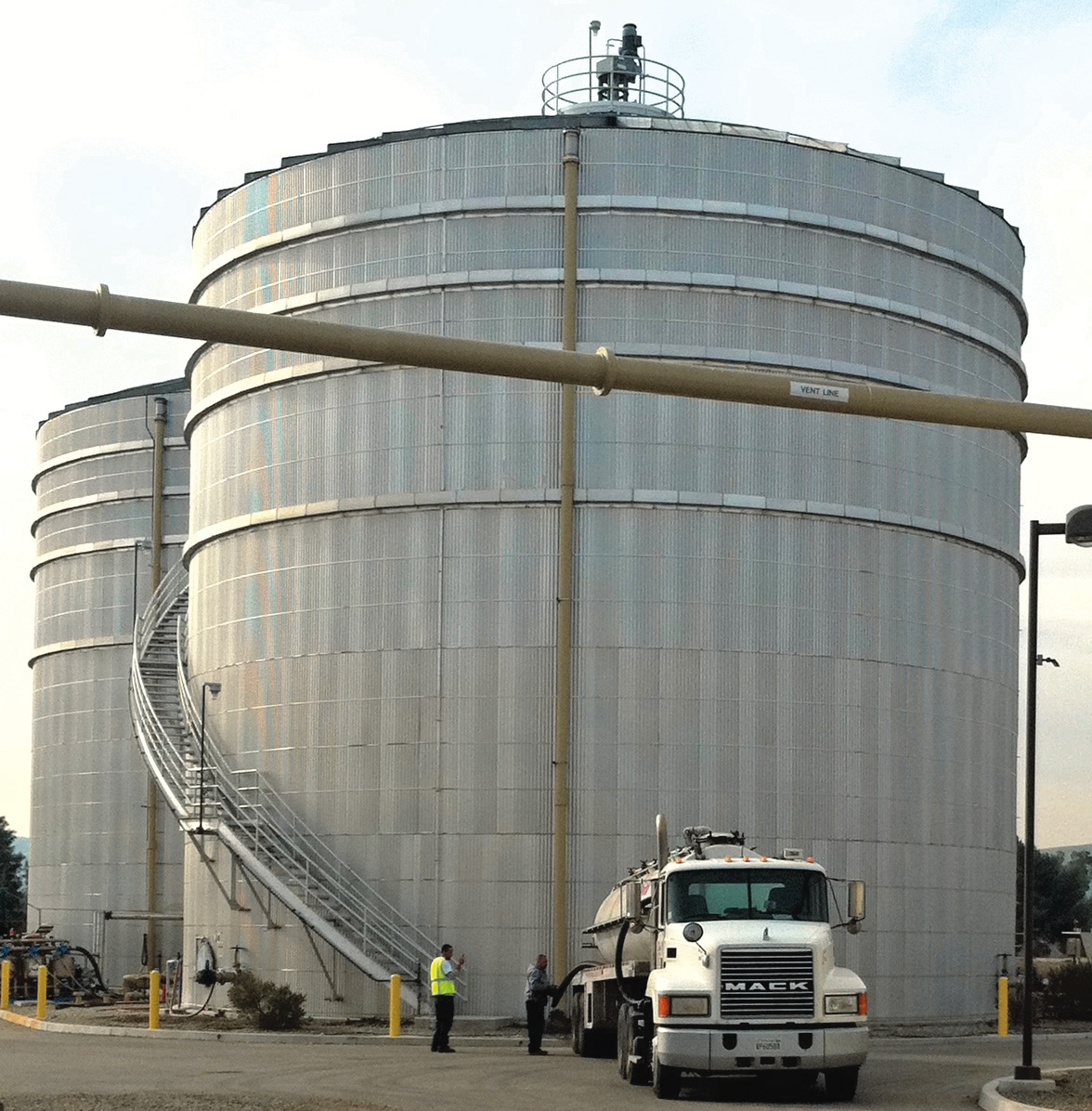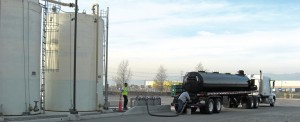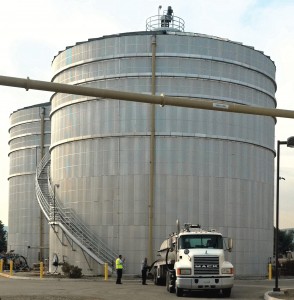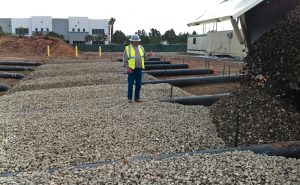Diversion of 100,000 tons/year of commercial and industrial solid food waste is anticipated, along with generation of transportation fuel as CNG for 40 to 50 solid waste collection trucks.
John McNamara and George Eowan
BioCycle July 2012, Vol. 53, No. 7, p. 42
The digester project is located at IEUA’s Regional Plant Number 5 (RP-5) Solid Handling Facility (SHF) in Chino, and is approximately 15 acres in size. Built in 2002, RP-5 SHF is a fully permitted AD facility equipped with a materials receiving building and two anaerobic digester tanks. The continuously stirred reactors (CSR) are a European design from a German company. In addition to the digesters, there are four liquid food waste receiving tanks, each with 15,000-gallon capacity; a biofilter to treat the air from the waste receiving building; gas compression equipment, and two GE Jenbacher engines powered by biogas for generating electricity. The engines are each 1.6 MW in capacity for up to 3.2 MW of electrical generation and include equipment for heat recovery.
A pilot project is underway to convert biogas to compressed natural gas (CNG) vehicle fuel for heavy-duty trucks. The pilot is receiving liquid food waste and generating biomethane. By the end of 2012, solid food waste will be introduced on a predetermined schedule to assess the overall performance of the new preprocessing equipment designed by Environ Strategy. By the first quarter of 2013, the facility is expected to be operating at its full capacity of 350 tons/day.
Project History
The existing site and equipment are permitted for food waste processing and a CEQA (California Environmental Quality Act) approval is already completed. IEUA installed the RP-5 SHF facility in 2002 for anaerobic digestion of dairy and food waste. Solid dairy wastes, primarily manure from local farms, were received and placed into a plug flow digester that was built by Synagro in cooperation with the IEUA engineers. IEUA operated the plant for several years using cow manure to create biogas, but the process proved unsuccessful.
In 2005, the two above ground CSR digesters — each with 1.2 million gallons of capacity — were added to allow introduction of food waste to supplement the dairy waste. In 2009 IEUA decided to shut down the facility due to low gas production and lack of financial resources to continue. In 2011, Environ Strategy began liquid food operations at the facility and is creating biogas. The current liquid food processing utilizes feedstock from commercial food processors and does not require preprocessing. The feedstock is received in standard liquid waste trucks.
Current Facility Development
Food waste will be received primarily from solid waste collection programs in southern California. Environ Strategy has applied for a grant from the California Energy Commission to operate a pilot scale gas treatment system supplied by FirmGreen that will produce renewable CNG for sale to the solid waste companies’ CNG fueling stations located in Riverside and San Bernardino Counties. In full operation, the facility will create 750 to 1,000-diesel gallons equivalent of CNG that could fuel 40 to 50 solid waste collection vehicles. Solid waste collection trucks bringing food waste to the biomethane plant can be refueled at the site, providing a completed circle from waste collection and disposal, to biofuel production, and then use of the CNG for waste collection.
Over the next few months, the equipment start-up and shakedown process is expected to generate more equipment repairs, including pumps and piping for food waste, wastewater and biogas. The solids preprocessing equipment will require commissioning and testing, and the biofilter will be closely monitored to minimize any odor issues. Environ Strategy has secured the feedstock which is primarily food waste. The facility will also process a minor amount of selected cow manure from local suppliers.
John McNamara, P.G./C.E.G., is Vice President, and George Eowan, Ph.D., is Director of Environmental Services and Renewable Energy at Environ Strategy Consultants, Inc. The company has operating experience with anaerobic digestion facilities including Miller Brewing, Sunkist and Ventura Foods.













